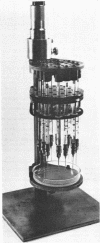Abstract
Phage typing was used to identify strains of Escherichia coli isolated from urinary and nonurinary sources. When eight phages isolated in Pennsylvania were used to type 717 cultures from Missouri, 50.3% of 624 urinary isolates and 34.4% of 93 nonurinary isolates were typable. Strains from nonurinary sources were not found commonly in urine. When five additional phages isolated in Missouri were added to the original set of eight phages, 80.4% of 331 urinary isolates were typable. When this set of phages was used to type 552 urinary cultures isolated in California, Minnesota, Ohio, Pennsylvania, Virginia, and West Virginia, 82.0% of the cultures were typable. Some common phage types were found in high incidence among cultures from the different regions. No correlation was found between phage type and the pattern of resistance to antibiotics. Phage typing data were presented also on the number of strains in individual urine specimens and the recurrences of strains in patients with chronic bacteriuria. Of 97 fecal isolates, 75.2% of the cultures were typable, and the most common phage type was observed in high incidence among the urinary isolates from this region. When 75 cultures from nine other genera of enteric bacteria were typed, only the shigellae were lysed. In view of the information obtained by phage typing and the ease and speed with which it can be done, it is suggested that phage typing be considered a new tool in epidemiological studies of urinary tract infections by E. coli.
Full text
PDF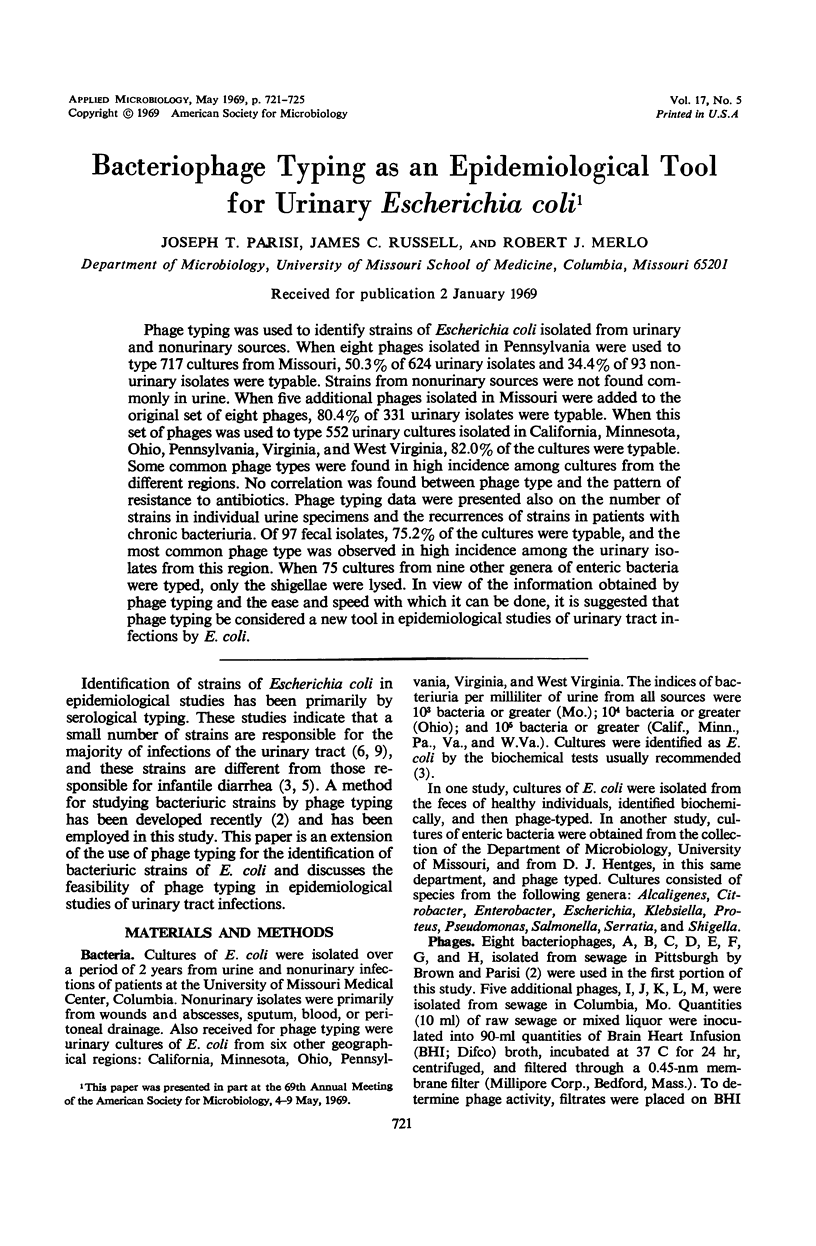
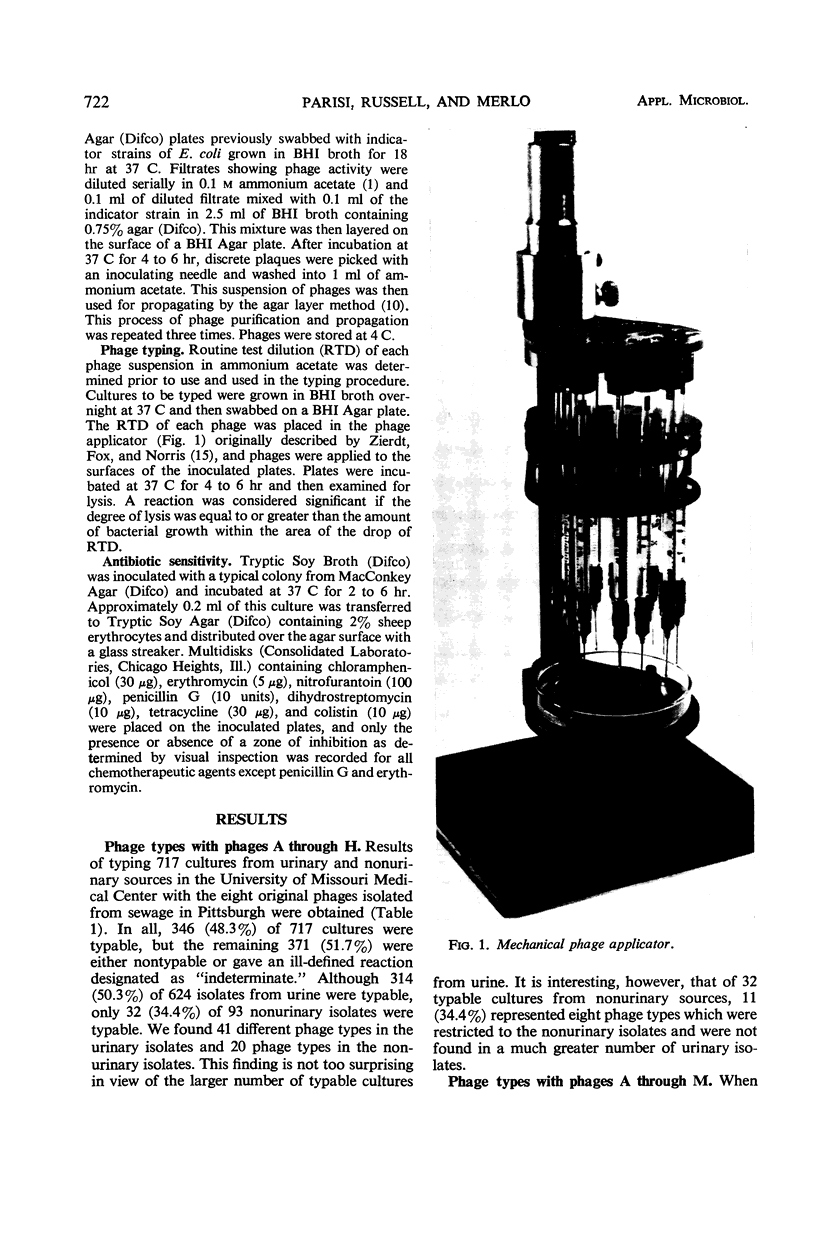

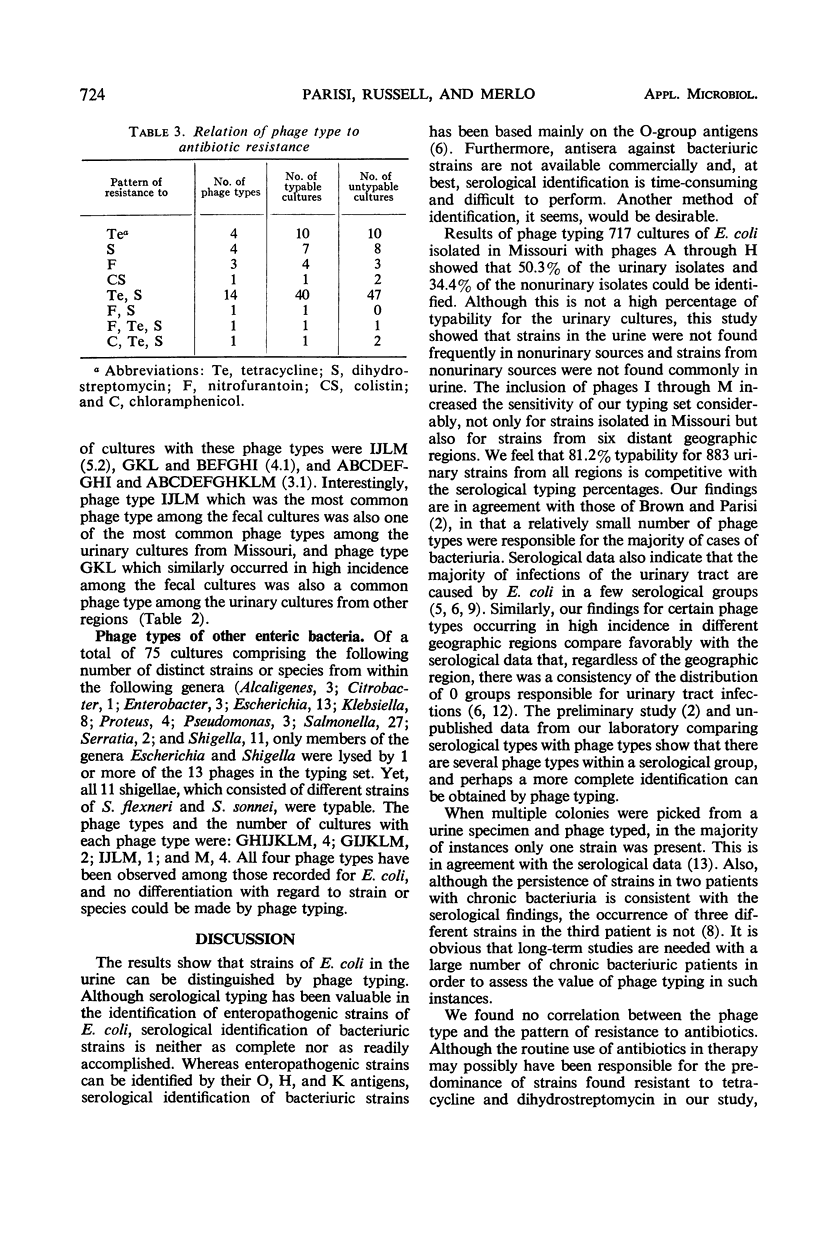
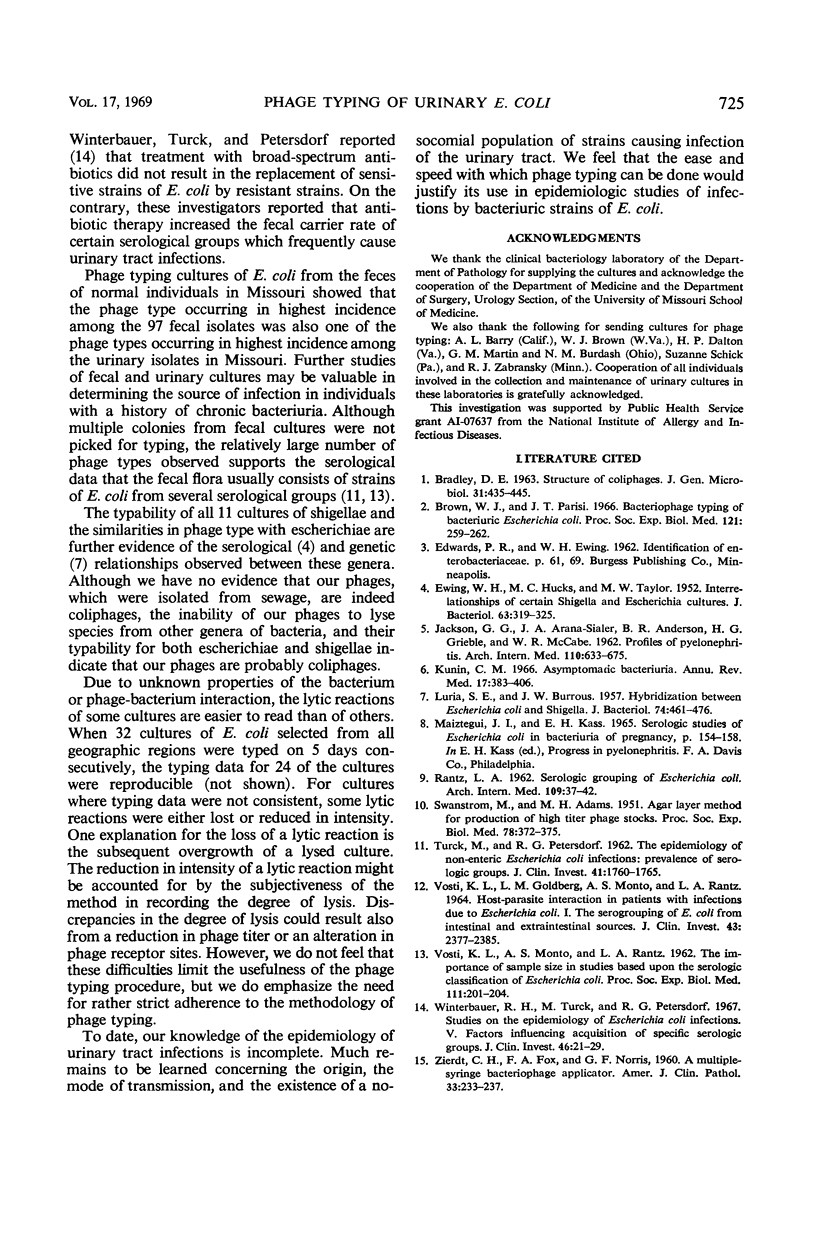
Images in this article
Selected References
These references are in PubMed. This may not be the complete list of references from this article.
- BRADLEY D. E. The structure of coliphages. J Gen Microbiol. 1963 Jun;31:435–445. doi: 10.1099/00221287-31-3-435. [DOI] [PubMed] [Google Scholar]
- Brown W. J., Paris J. T. Bacteriophage typing of bacteriuric Escherichia coli. Proc Soc Exp Biol Med. 1966 Jan;121(1):259–262. doi: 10.3181/00379727-121-30751. [DOI] [PubMed] [Google Scholar]
- EWING W. H., HUCKS M. C., TAYLOR M. W. Interrelationship of certain Shigella and Escherichia cultures. J Bacteriol. 1952 Mar;63(3):319–325. doi: 10.1128/jb.63.3.319-325.1952. [DOI] [PMC free article] [PubMed] [Google Scholar]
- LURIA S. E., BURROUS J. W. Hybridization between Escherichia coli and Shigella. J Bacteriol. 1957 Oct;74(4):461–476. doi: 10.1128/jb.74.4.461-476.1957. [DOI] [PMC free article] [PubMed] [Google Scholar]
- RANTZ L. A. Serological grouping of Escherichia coli. Study in urinary tract infection. Arch Intern Med. 1962 Jan;109:37–42. doi: 10.1001/archinte.1962.03620130039006. [DOI] [PubMed] [Google Scholar]
- SWANSTROM M., ADAMS M. H. Agar layer method for production of high titer phage stocks. Proc Soc Exp Biol Med. 1951 Nov;78(2):372–375. doi: 10.3181/00379727-78-19076. [DOI] [PubMed] [Google Scholar]
- TURCK M., PETERSDORF R. G. The epidemiology of nonenteric Escherichia coli infections: prevalence of serological groups. J Clin Invest. 1962 Sep;41:1760–1765. doi: 10.1172/JCI104635. [DOI] [PMC free article] [PubMed] [Google Scholar]
- VOSTI K. L., GOLDBERG L. M., MONTO A. S., RANTZ L. A. HOST-PARASITE INTERACTION IN PATIENTS WITH INFECTIONS DUE TO ESCHERICHIA COLI. I. THE SEROGROUPING OF E. COLI FROM INTESTINAL AND EXTRAINTESTINAL SOURCES. J Clin Invest. 1964 Dec;43:2377–2385. doi: 10.1172/JCI105112. [DOI] [PMC free article] [PubMed] [Google Scholar]
- VOSTI K. L., MONTO A. S., RANTZ L. A. The importance of sample size in studies based upon the serologic classification of escherichia coli. Proc Soc Exp Biol Med. 1962 Oct;111:201–204. doi: 10.3181/00379727-111-27744. [DOI] [PubMed] [Google Scholar]
- Winterbauer R. H., Turck M., Petersdorf R. G. Studies on the epidemiology of Escherichia coli infections. V. Factors influencing acquisition of specific serologic groups. J Clin Invest. 1967 Jan;46(1):21–29. doi: 10.1172/JCI105507. [DOI] [PMC free article] [PubMed] [Google Scholar]
- ZIERDT C. H., FOX F. A., NORRIS G. F. A multiple-syringe bacteriophage applicator. Am J Clin Pathol. 1960 Mar;33:233–237. doi: 10.1093/ajcp/33.3.233. [DOI] [PubMed] [Google Scholar]



